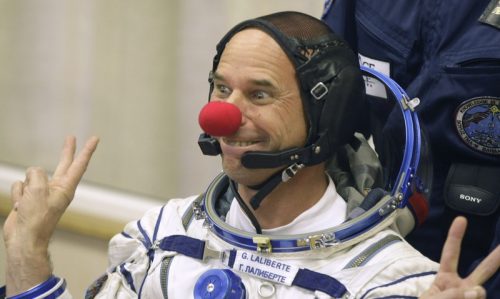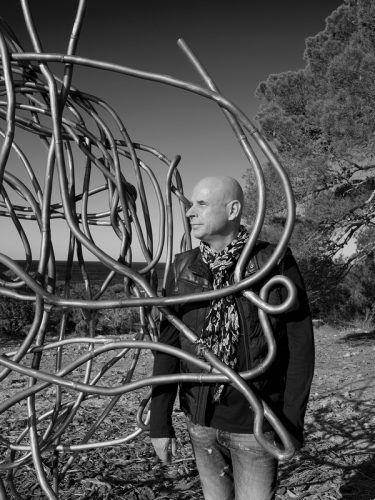
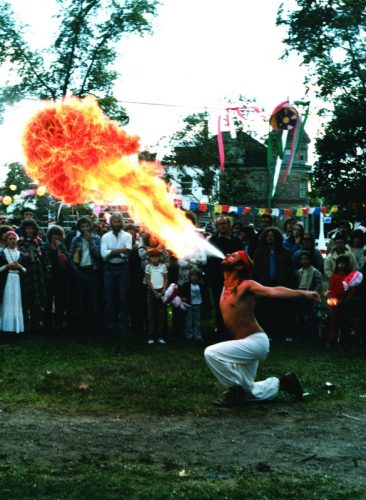
The first time Guy Laliberté, 56, visited Ibiza, in the late 1970s, he paid his way as a busker, stilts walker, and fire-eater. Back then, the idyllic Spanish island was a hippie enclave frequented by nudists, out-of-favor aristos, and pedigreed thrill seekers on the hunt for mind-altering, round-the-clock bacchanalia. These days, Laliberté owns Can Soleil, a 64-acre spread on Ibiza’s northwest coast, purchased from the art collector and Mercedes-Benz heir Friedrich Christian “Mick” Flick, and he arrives via either his own plane or his 178-foot yacht, the Tiara. While the intervening years have seen the street performer–turned–Cirque du Soleil cofounder become a billionaire, they have done little to diminish his flair for seeing possibility in unlikely places.
“They thought I was crazy when I brought this here,” Laliberté told me one afternoon this past February, practically shouting over the whipping winds as we walked around the first large-scale artwork he had transported to the island. Time and Space the Speed of Light, 13 solid-basalt columns that rise, Stonehenge-like, over the cliffs, was a commission from the Australian sculptor Andrew Rogers. Laliberté laughed as he recalled how local authorities looked askance at his insistence on erecting the 420-ton installation on his property. “They sent police cars!” When it comes to his endeavors—whether it’s creating a global brand out of a band of street artists or becoming the first Canadian space tourist (more on that later)—Laliberté is a high-stakes player, the kind of impresario that his boyhood heroes P.T. Barnum and Walt Disney might have admired. Though he began amassing blue-chip contemporary art only three years ago, the Montreal-based mogul has just unveiled a public sculpture park on the grounds of his Ibiza home, a year after opening two contemporary exhibition spaces near the center of the island’s namesake town. Also in town is Heart Ibiza, a club and restaurant designed by Patricia Urquiola that he co-owns with the celebrated chef brothers Albert and Ferran Adrià, of El Bulli fame.
“I always plant the seeds of my desire and try to be a gardener of it,” Laliberté said with a mixture of understatement and bravado, making it clear that he hopes for nothing less than to turn this sybaritic outpost into a year-round cultural destination even after the summertime highfliers and famous DJs have moved on. “And I’ve been lucky in my life to be very successful in my harvest.”
Dotting his sculpture park’s vast hardscrabble grounds are Ugo Rondinone’s colossal Stone Figure, 2015, and Ai Weiwei’s Iron Tree, 2013. Nestled strategically in the brush are enormous red boulders inscribed with text, part of the conceptual artist Jenny Holzer’s site-specific commission. At Laliberté’s invitation, Holzer spent several weeks in residence this past winter, scouring the island for rocks and preparing for the exhibition that now fills Laliberté’s two public spaces—Lune Rouge and Art Projects Ibiza—overseen, as is the park, by Heather Harmon, director of the art advisory KCM Fine Arts. The exhibition, “Are You Alive?” which runs through mid-December, includes Holzer’s iconic LED artworks and a selection of marble benches inscribed with aphorisms. In the sculpture park, she was hoping to carve Dada text or concrete poetry right at the waterline, and sentence fragments or words on the rocks on the slope of the hills. “That way, the thought gets completed by the visitor by the time they get to the bottom,” she elaborated when I joined her and Laliberté on a tour. I asked her later what she made of her patron. “He strikes me as someone who thinks that being a bit wild is a good idea.”
Last summer, the first artist in residence was the Japanese superstar Takashi Murakami, who inaugurated the exhibition spaces to great fanfare. “Guy took a plunge into the deep end of the pool very quickly,” Tim Blum, whose gallery Blum & Poe represents Murakami, says of Laliberté’s ambition. “He’s not theoretical; he has uncanny primal instincts. A lot of what he responds to is work that can be experienced in a spiritual or physical way.” A case in point is Sarah Lucas’s bawdy sculpture Gold Cup Maradona, a ginormous sunshine-yellow phallus thrusting to the sky that dominated the entrance to Lucas’s exhibition in the British Pavilion at the 2015 Venice Biennale and is now a highlight of Laliberté’s collection. Nearby is Giuseppe Penone’s towering 2012 Albero Folgorato/Thunderstruck Tree, whose sliced branches of bronze and gold leaf call to mind a thunderbolt.
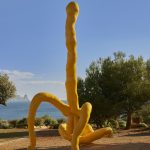
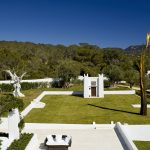
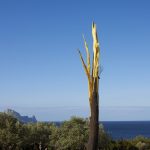
“At first I made mistakes,” Laliberté admitted, pointing out the drunken-angel statue on the lawn, which he plans to keep there as a reminder of those missteps. We were sitting on a white sofa winding around the grand picture windows in the main villa, one of several buildings at Can Soleil. A black toque was pulled down over his shaved head, and he was wearing a black leather jacket, a black scarf, black suede sneakers, and black jeans. With his tattoos, rows of beaded string bracelets, and ever-lit Gauloise, he suggested a French cineast. “My approach was more about buying things that made sense in an autobiographical way, creating the story that I wanted to make. But at a certain point, I wanted to build something serious. I got totally hooked and took it as a challenge to educate myself in a short period of time.”
Three years ago, Laliberté hired Kimberly Chang Mathieu, the founder of KCM Fine Arts and a former art adviser to Los Angeles mega collectors Maurice and Paul Marciano of Guess. Chang Mathieu and Laliberté spent a year looking at museums, fairs, and galleries without buying a thing. “It was my Art History 101,” he joked. Since 2014, he has made up for lost time, purchasing about 100 pieces by 30 artists. “When something piques his interest, he can’t let it go,” Chang Mathieu told me. “He needs to understand, master, and be the best at it.” Sure, there are plenty of splashy current names in his collection, but Laliberté is also willing to dig deep into previous generations. In a recent show of works he owns at Lune Rouge, Kara Walker’s 2013 cut-paper wall installation The Sovereign Citizens Sesquicentennial Civil War Celebration shared the room with one of David Hammons’s shrouded mirrors, Nam June Paik’s 1994 video pieces, and a wall sculpture by Martin Kippenberger.
If Laliberté’s tastes now lean more to the avant-garde than to mass entertainment, sharing his treasures with the public has always been part of his plan: One of the ways in which he reinvented the traditional circus with Cirque du Soleil was by combining musical theater, spectacle, and acrobatic disciplines from around the globe. “Your capacity to build a great institutional collection defines your quality as a collector,” he said, noting that he’s made major loans to the island’s only other public contemporary space, the Museum of Contemporary Art of Ibiza, which last year organized a show of collaborative works by the artists Douglas Gordon and Tobias Rehberger—another sign that Ibiza’s new crowd includes players on the international art circuit.
Fabulous wealth, of course, has allowed Laliberté to move quickly, but so too has his rapport with the artists whose work he collects. “I think the fact that I was an artist really helps me get access to certain things that I wouldn’t have if I were only a rich collector,” he said. “I like spending time with people who have passion.” After a studio visit with the famously reclusive Hammons got off to an awkward start and Hammons left to get coffee, Laliberté sought him out on his own and clicked with the artist by talking about his days in New York as a street performer. He’s hosted Murakami and his family at elaborate Cirque premieres in Tokyo, and for the artist’s opening on Ibiza last summer, Laliberté threw a party at home for 1,700 guests and played DJ all night. Last October, he flew to Paris for Sterling Ruby’s first solo show with Larry Gagosian and, while there, bought Rondinone’s film of John Giorno performing his poem Thanx 4 Nothing, after seeing the work in the Giorno retrospective at the Palais de Tokyo. Ruby says he knows within the first 30 minutes of a studio visit if there is going to be a relationship with a collector. “I’ve had sheikhs and hedge fund kings come through,” he says. “With Guy, you could tell art was an obsession. His comments were intuitive and edgy.” Ruby considers him one of a handful of his “old-school patrons—the kind who come to the studio, talk about the work, and then come to see how it evolved in the show.” (And then buy it.)
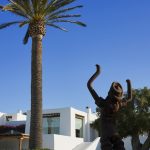
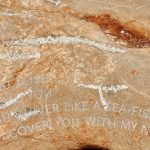
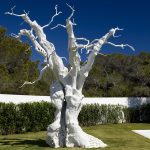
Laliberté sleeps anywhere from one to six hours a night, getting by on power naps. His style is decidedly laid-back, but he’s a stickler for detail, even choosing all the housewares and linens himself for the homes he owns around the world. His friends like to say that nothing makes him happier than masterminding the best party in town, whether it’s in Montreal or Tahiti. “He can just rip-roar-on-the-floor laugh because someone’s having a new experience,” said Chang Mathieu, who travels with him regularly. “He’s so excited when somebody’s eyeballs are like, ‘Holy shit!’!”
His knack for “organizing chaos,” as he described his early role at Cirque, extends to his personal life. This past year, Laliberté took his two youngest kids out of middle school so they could travel around the world on the Tiara; the group included their mother, his ex-partner Claudia Barilla, his masseuse, and his then-girlfriend. Laliberté has three older children with his first partner, Rizia Moreira, a Brazilian former model, and the entire brood, together with all the grandparents, gathers for holidays in Kona, Hawaii. Two of his kids inherited their father’s love of adrenaline: His son Kami, 16, is a promising race-car driver on the Formula 4 circuit; his daughter Naima Moreira-Laliberté, 19, is a champion Canadian junior equestrian in dressage. Last year, when Laliberté sold 90 percent of his stake in the Cirque juggernaut to U.S., Chinese, and Canadian investors, he announced that he didn’t want to burden his children with burnishing his passion—he wanted them to discover their own. He still retains a 10 percent stake and remains in the role of artistic adviser for every Cirque show.
Laliberté grew up in Quebec City, where his father worked in client relations for the aluminum manufacturer Alcan and his mother was a nurse. Both parents played music, and their son became adept at accordion. In school, he said, “I was a troublemaker, for sure. There was a moment when I could have jumped on the dark side, versus going for my dream.” He got kicked out of a few schools before the director at one of them recognized Laliberté’s ability to mobilize the students and put him in charge of student-faculty relations. At 18, he hit the road as a juggler and fire-eater; later, he started a theater troupe in which everyone preformed on stilts. In 1984, at the age of 25, he united a bunch of street performers he knew in Baie-Saint-Paul, a city on the northern shore of the St. Lawrence River, for a performance that would seed Cirque du Soleil, a spectacle that bridged the gap between circus and theater with a theme, lavish sets, commissioned scores, and no animal acts. Ever the showman, Laliberté said he sensed in the 1990s “that Las Vegas was the market to grab” and persuaded the casino mogul Steve Wynn to make Cirque a permanent fixture at his then-latest hotel, Treasure Island, and to cede him creative control of the show. In short order, Laliberté redefined Las Vegas as a family–entertainment destination.
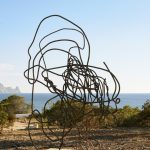
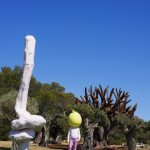

During my visit to Ibiza, I joined Laliberté for dinner at one of his villas, along with Holzer, Chang Mathieu, and various friends and colleagues. Though his conversation was punctuated with New Agey references to energy points, Laliberté laughingly recalled his unlikely foray into gambling. One night in 2006 at the Bellagio in Las Vegas, he asked to join a game of poker, but no one would let him in because he was a beginner. So he plunked down $50,000 on the table and got a seat. “He observed for about 20 minutes,” his friend Sean O’Donnell, who oversees Laliberté’s real estate and hospitality ventures, remembered, picking up the story. “Then he said to me, ‘Listen, they’re going to think we’re a bunch of drunk French frogs and that they’re going to take all our money.’ Of course, he ended up cleaning everybody out at that table that night.” A year later, Laliberté finished fourth in the World Poker Tour World Championship.
In 2009, he upped the stakes on his adventures by traveling to outer space on a Russian Soyuz spacecraft, paying $35 million for the trip to the International Space Station. Before takeoff, he spent six months training alongside cosmonauts in Star City, Russia, where he learned about spaceflight and survival and lived and cooked for himself in a tiny apartment. Despite being a chain smoker, he passed dozens of medical tests. While in space—where he dared his fellow astronauts to don clown noses—he was patched in live via satellite to a U2 performance in Tampa, Florida. With Laliberté on the giant screen, his friend Bono chatted him up about the experience—to help raise awareness of Earth’s water-shortage issues on behalf of the One Drop foundation, which Laliberté had founded two years earlier.
Laliberté is even considering a bold reinvention of the modern-day cemetery. Already, the creative maverick has purchased land in Montreal for a public memorial park, where he imagines visitors will celebrate the lives of those remembered there via a museum and interactive installations. He is also in the final stages of completing a private, solar-powered resort on Nukutepipi, the atoll he owns in French Polynesia, which is 475 miles from Papeete—more precisely, in the middle of nowhere. Laliberté has had to create everything from scratch: He erected a facility to make asphalt and cement to build a runway and greenhouses to produce vegetables. Modeled on Sir Richard Branson’s Necker Island, it will be completely self-sustaining and serve as a kind of luxe “last” resort, should a doomsday scenario present itself.
But back on Ibiza, the world’s toniest revelers were about to descend on the island, and Laliberté was eager to orchestrate their astonishment. “I want people to poke around and explore,” he said of Holzer’s plan to hide many of her new works across the property. “I’m just an actor in contemporary art. I’m not provoking change, but I’m making my little gesture. I’m taming my garden.”
{ SOURCE: W Magazine | http://goo.gl/EsEofO }
